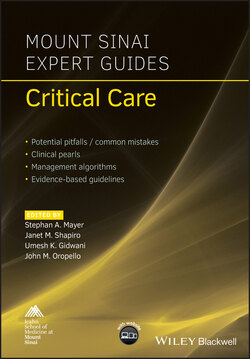Читать книгу Mount Sinai Expert Guides - Группа авторов - Страница 79
Clinical application
ОглавлениеAssess for pericardial effusion or tamponade:Effusion appears as anechoic area within pericardial space.Large effusions tend to wrap circumferentially around heart.Clotted blood or exudates appear more echogenic.If effusion is identified, observe closely for diastolic collapse of right heart which indicates tamponade physiology.
Determine global left ventricular (LV) function, systolic function and size:Contractility is best determined using parasternal views.‘Good’ contractility: LV walls almost touch during systole and nearly obliterate ventricular cavity; anterior leaflet of mitral valve moves vigorously in parasternal long axis view.‘Poor’ contractility: minimal wall movement or change in ventricular cavity between systole and diastole.Small ventricular cavity in hypovolemic conditions.
Assess for right ventricular (RV) strain (Figure 4.3):Classic sign of massive pulmonary embolus.RV dilation: RV size exceeds LV size.Paradoxical septal wall motion or ’D’ sign: best seen in parasternal short view; normal LV is circular but increased RV pressure flattens or bows interventricular septum into LV during diastole.McConnell’s sign: RV dysfunction with characteristic sparing of apex; often described as ‘invisible man jumping on trampoline at RV apex’.
